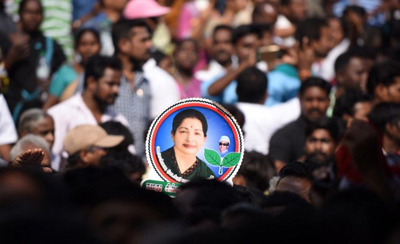Chennai, Dec 10: The State government has allotted Rs. 15 crore for the construction of a memorial for former Chief Minister Jayalalithaa near the MGR memorial on the Marina.
 According to a minister, the tender for executing the work will be floated soon.
According to a minister, the tender for executing the work will be floated soon.
“The money has been allotted and officials have taken the measurements around where Amma was laid to rest. A tender will be floated, and after the minimum required period, work on her memorial will be undertaken at full speed,” the Minister told The Hindu on Friday.
Jayalalithaa was laid to rest within the confines of the MGR memorial, which is spread over eight acres.
Officials of the Public Works Department (PWD) said the department was yet to come up with a design for the memorial. “We are yet to receive a directive from the government in this regard,” an official said.
“We are only carrying out minor repair work on the site. Temporary arrangements like provision of tent and barricades around the site have been made. The construction of the memorial is still in the preliminary planning stage,” an official said.
Even as thousands of people thronged the Marina to pay homage to Jayalalithaa all through the day, the late Chief Minister's confidante V.K. Sasikala visited the burial site and spent some time there. Teary-eyed, she went around the place where Jayalalithaa was buried.
Chief Minister O. Panneerselvam and his senior Cabinet colleagues — P. Thangamani, Edapaddi Palaniswami, Dindigul Srinivasan and S.P. Velumani — were waiting at the barricades when Ms. Sasikala, her sister-in-law Ilavarasi, a few family members and domestic aides at Veda Nilayam, the former Chief Minister's Poes Garden residence, paid their respects.
Later, Mr. Panneerselvam and the ministers too paid their respects. A couple of Ministers tonsured their heads.






Comments
waste of money. give this money to poor who suffers for food and shelter.
Waste of money.....
Add new comment